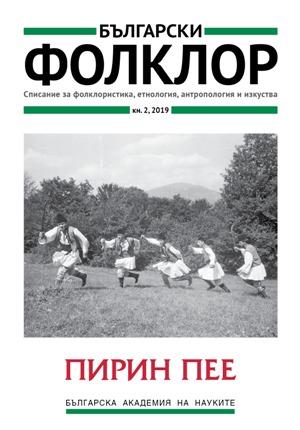История на българските фолклорни танци от европейска гледна точка
The History of the Bulgarian Dances from a European Point of View
Author(s): György NémethSubject(s): History, Anthropology, Social Sciences, Theatre, Dance, Performing Arts, Fine Arts / Performing Arts, Cultural history, Customs / Folklore, Music, Ethnohistory, Social history, Cultural Anthropology / Ethnology, Culture and social structure , Social development, Sociology of Culture, Identity of Collectives, History of Art
Published by: Институт за етнология и фолклористика с Етнографски музей при БАН
Keywords: Faroe step; proportion; springing dances; instrumental accompaniment; wedding
Summary/Abstract: The European dance culture is homogeneous. Many of the European dances are not only related to each other but are also variations of each other. Their area of distribution (the ancient Roman Empire) indicates that a common dance ancestor had already existed in antiquity. This ancient dance is the so called Faroe step. The ideology of humanism resulted in a worldview in which the human being and his free will become the measures of everything. Human needs and interests are put in the centre of the new worldview. The worth of the individual increases and he is gradually released from his shackles, life turns into a priority, a demand for individual gratification appeared: amusement, entertainment, dance. From the local variants of the Faroe step used in the ancient rituals has developed in a fanlike manner the European dances (including the Bulgarian ones) with their incredibly rich tempos and rhythm were developed. They were all inspired by the dominant instrumental musical accompaniment.
Journal: Български фолклор
- Issue Year: XLV/2019
- Issue No: 2
- Page Range: 210-227
- Page Count: 18
- Language: Bulgarian
- Content File-PDF

